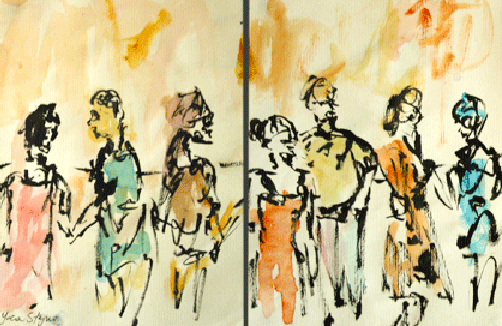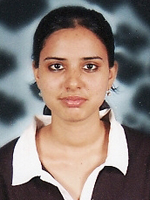
They say marriages are made in heaven. I totally agree with this statement looking at the condition of today’s lovers. Everybody wants love, but it comes with lot of riders. I’m talking about love which the youth share, or a man and a woman who have taken the decision to tie the knot. Does love really have precautions? Does the love which a mother and child or a husband and wife share come with a lot of precautions too? I don’t think so. Love has no restrictions but, why is this not applied when it comes to a young couple of different religions who want to get married? Isn’t it pure love, what they have as well? Why do we make such distinctions?
Today we see so many young couples committing suicide, family members murdering their own sons or daughters for the sake of Honour (Honour Killing). All this in turn points to one aspect that is religion and or, caste. It seems that religion has been the only cause behind every war, corruption, politics and love. Just think about this. If religion never existed, today the tight spot would be less. Sometimes it makes us ask questions like- who started religion and money? Was it not enough that simple Spirituality existed? As they seem to be the cause behind all evil. Well, the answer indicates that man is the reason behind this invention. What should be considered surprising is the fact that the general population has accepted the “Teachings” of this, Religion, without question. It was all good and fine in the time before common science (not just common sense). But surely, it is high time for Religion to evolve with the times.
Have you really read the scriptures of your own religion? It may be the Bible, or the Bhagavad Gita or the Quran or any other Holy book. None of these scriptures advocate discrimination, or seeing those that do not follow the path as being wrong. It is the clerics and priests and so called holy men who see the influence they have over people of lesser minds and use that to their own advantage and fuel their ego by preaching hate and discrimination among the general public.
I’ve heard people saying brotherhood, fraternity, equality or that all God’s are one. But, in reality where is this oneness gone when it comes to marriage. How many lovers have been rejected just for the sake of religion? We are all doing it in order to survive in society. But, society itself is shockingly far from perfect. It’s only written and never practiced. The best example I can give is whether we follow our own preamble of the constitution, which goes like this:
“WE, THE PEOPLE OF INDIA, having solemnly resolved to constitute India into a SOVEREIGN, SOCIALIST, SECULAR, DEMOCRATIC, REPUBLIC and to secure to all its citizens:
JUSTICE, social, economic and political;
LIBERTY thoughts, expression, belief, faith and worship;
EQUALITY of status and of opportunity;
and to promote among them all
FRATERNITY assuring the dignity of the individual and the unity and integrity of the Nation;
IN OUR CONSTITUENT ASSEMBLY this twenty-sixth day of November, 1949, HEREBY ADOPT, ENACT AND GIVE TO OURSELVES THIS CONSTITUTION.”
The preamble of our constitution says we are secular. It seems like empty words are written on paper. Do you really think we are secular when it comes to marriage? Society believes something else and books teach something else. What is said in our constitution is rarely practiced.
Why is religion given more importance? It should be a personal priority or interest, not to be applied to everyone else like a law. Instead there should be one religion that should be applied to everyone and that is humanity. Life is so much more than religion. The question which revolves in my mind is when will our country become open minded, when will it rise beyond petty religious squabbles and instead chase intellectual and spiritual goals?
Man is dynamic when it comes to technology and science but, when it comes to religion, they keep following their old traditions and worn out values. We say India is a free country. Where is that religious freedom then? I must say, I don’t see it. In reality, we have no freedom and are chained to so many traditions dictated by religion. When we are born, we are not born with our own choice but that of our parents. So also when it comes to going to school, choice of religion and career; our choices are never taken into consideration. By stating this I’m trying to only prove my point that we don’t have the actual freedom we think we have just because it’s written in books. Every choice we make, we have to think about everybody else except ourselves.
Nevertheless, even while choosing a partner, we have to adhere to the choice of our parents and family. We don’t have the choice to marry a person irrespective of caste or religion. It’s like from womb to tomb, our freedom has been curbed. When a baby comes into this world, not by its choice, it’s mainly making a sacrifice for the parents. Further, as the child goes to school and does everything what the parents want it to do. Even when we are adults, our maturity has been insulted as people think we do not know to choose a partner. Is this fair? When as an adult, we handle so many things, is choosing a partner something to be considered less. Of all the choices our parents make for us from birth, isn’t it fair to give their adult children their choice of partner irrespective of caste or religion? Why does religion have to spoil a person’s freedom of choice? Though we see inter-religious or inter-caste marriages today, it’s only a small fraction of parents who have agreed for their children’s marriage between caste/religion. Some have left their family and are living separately; some have been killed for the sake of honour saying he/she is not their son or daughter if they marry a person of another caste/religion.
They say marriage is not between two people but between two families. But, only when these two families learn to accept the couple as a part of the society and not based on religion or caste, will there be peace in society. For this to even occur, India should be secular in terms of practice and not only in books. There are some families who believe in converting. Why does one need to convert just to be accepted by another family or society? What is the need for conversion? This is mainly what the people demand. Therefore, even the society demands. They think conversion in their point of view but fail to take into consideration the views of the other partner’s family too. Will converting solve all the problems? If people can still live together without converting then that would be wonderful.
Every person should be respected for his/her religion. When the children have grown up and become mature, they should be given the freedom to choose their own religion. Every individual should be thought to respect every religion and make them understand the good values and teachings and principles in every religion. Only then will every child have its freedom. Only then will India be called a secular and free country. Religion should never be an obstacle but rather an eye opener. People should have their choice and they should be respected for it. Ultimately, preaching does not help but practicing. There are very few couples who have sacrificed their loved ones for their family. Let these young people not go through such difficulties and dilemmas instead help them make their choice and respect them willingly.
Crystal Andrade








Comments
Add new comment